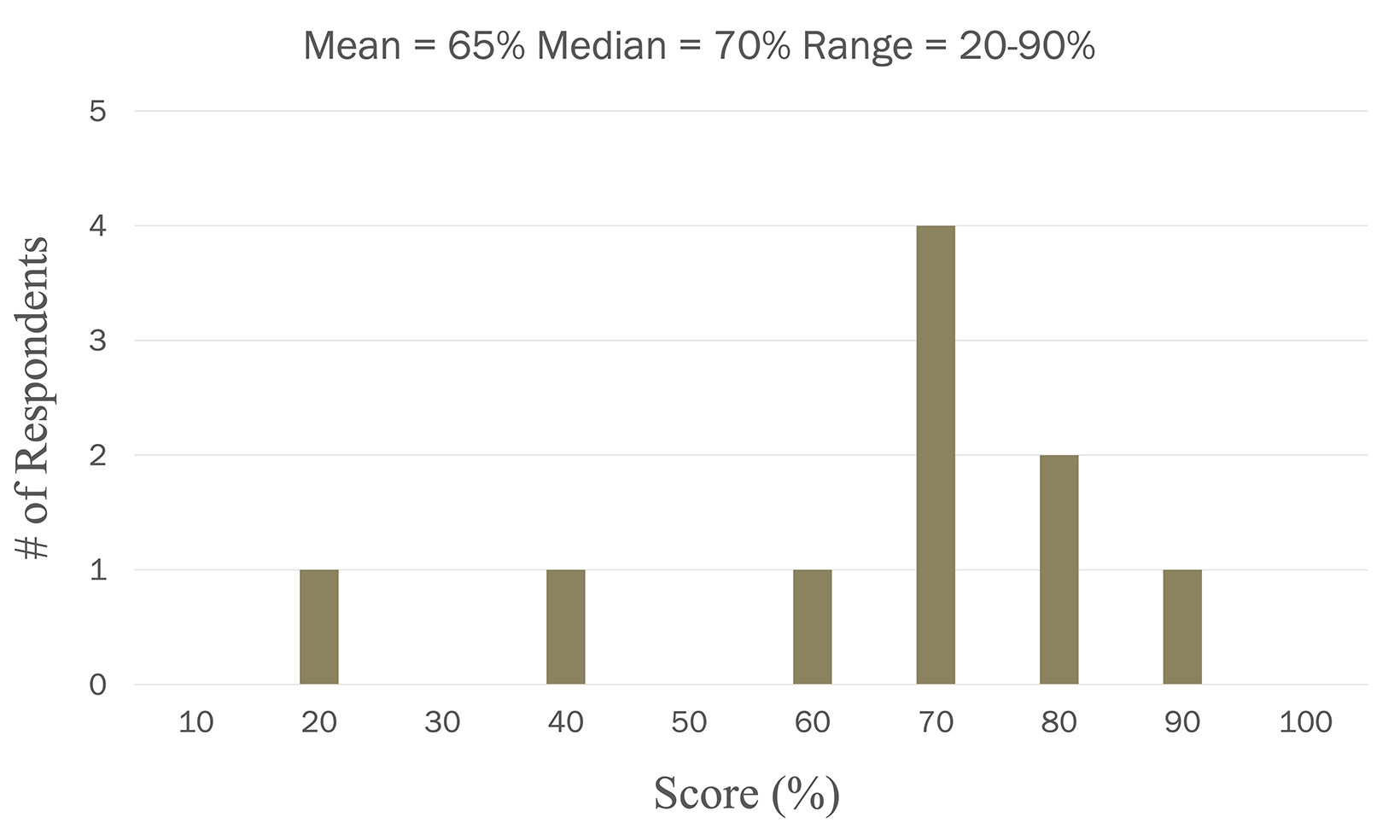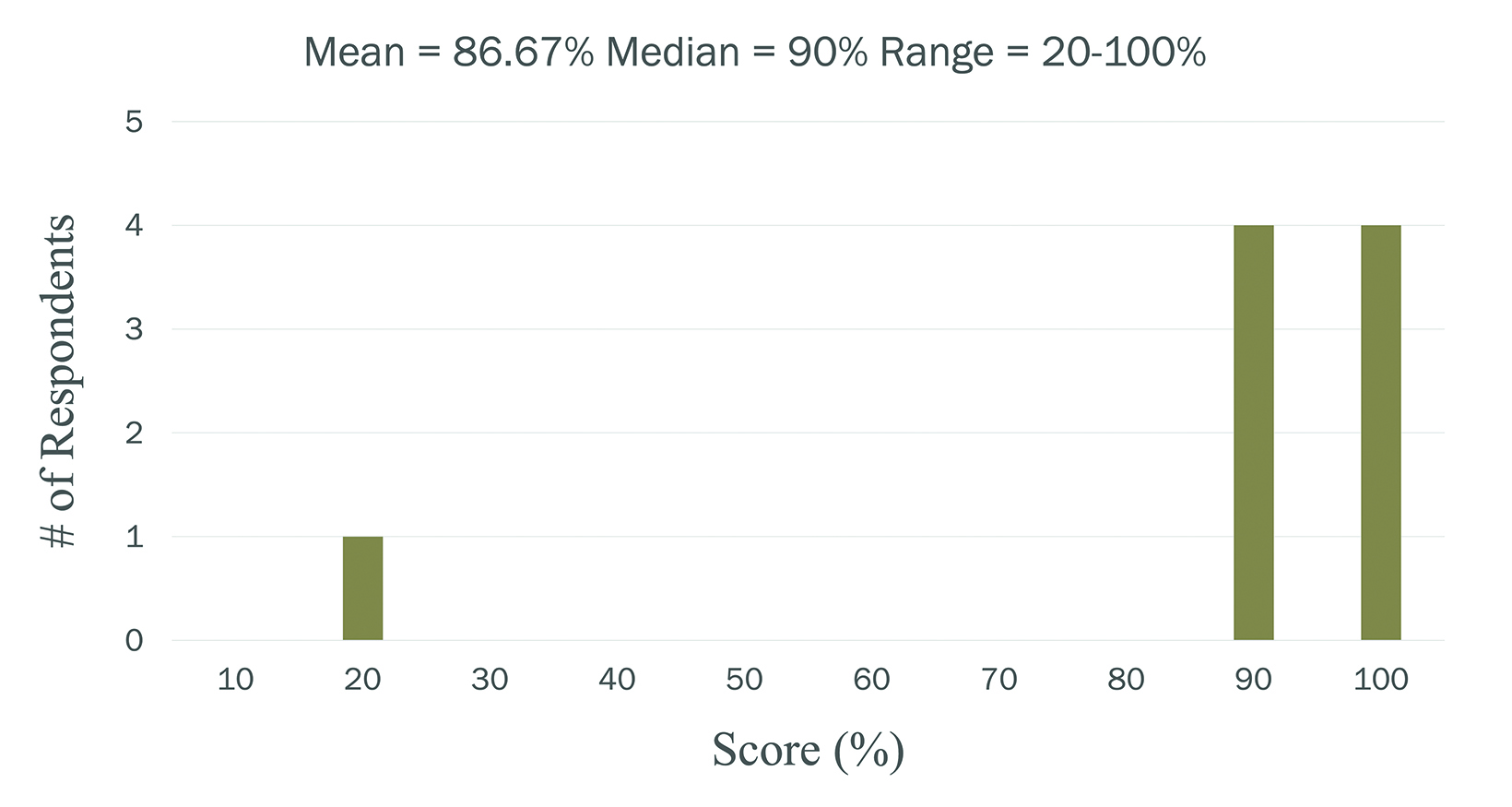Improving Radiology Resident Proficiency in MRI Safety
Images


Abstract
Background: Radiology residents are often tasked with deciding whether a patient can safely undergo a magnetic resonance (MRI) imaging scan. To correctly make these decisions the residents need to have strong knowledge about MRI safety issues. There are gaps in radiology resident knowledge about MRI safety that might be addressed with a variety of educational interventions.
Objective and hypothesis: The primary objective of this project is to increase mean radiology resident knowledge about MRI safety by a statistically significant amount. The hypothesis is that mean pre- and post- intervention knowledge scores will be the same, and the alternative hypothesis is that mean post-intervention score will be greater.
Methods: We assessed baseline MRI safety knowledge of Detroit Medical Center radiology residents (number=35) with a 10 question quiz. The radiology residents were then provided a PowerPoint presentation that summarizes recent review articles about MRI safety. Next, the residents took the same quiz again. We compared the pre- and post-intervention quiz scores.
Results: 10 radiology residents (28.6%) completed the pre-quiz and 9 radiology residents (25.7%) completed the post-quiz. When comparing the pre- and post-intervention quiz scores, the t stat = -2.020 and p one-tail= 0.03. As p < 0.05, the hypothesis is rejected, and we can conclude that mean post-quiz score > pre-quiz score with statistical significance.
Conclusion: There was a statistically significant increase in mean quiz score after residents reviewed a PowerPoint on MRI safety. Therefore, we achieved the primary objective by increasing resident knowledge about MRI safety. The participating residents can now make decisions about MRI safety with more accuracy and confidence. The primary limitation of this study was that fewer than 30% of the radiology residents participated and the respondents were skewed towards the early training years.
Introduction
There are multiple patient safety issues associated with MRI imaging due to the strong magnetic field and rapidly changing gradients, as well as concerns about administration of gadolinium-based contrast agents. The MRI technologist or radiology nursing staff frequently contact on-call radiology residents to resolve their concerns and specifically to ask whether a patient can be safely scanned or can safely receive contrast. Hollingsworth, et al,1 found gaps in radiology resident knowledge about these issues. Swenson, et al,2 assessed whether online modules or live lectures would improve resident knowledge about MRI safety and found statistically significant improvement in resident knowledge after intervention with both online modules and live lectures.
The primary objective of this project is to increase mean radiology resident knowledge about MRI safety by a statistically significant amount. The hypothesis is that mean pre- and post-intervention scores will be the same, and the alternative hypothesis is that mean post-intervention score will be greater.
The secondary objective of this project is to decrease radiology resident decision making time about MRI safety issues by a statistically significant amount. The hypothesis is that mean pre- and post-intervention time to complete the quiz will be the same, and the alternative hypothesis is that mean post-intervention time will be less.
Many benefits will result from the achievement of these objectives. Patients will benefit from more accurate MRI safety decisions. MRI safety decisions will be made more accurately and faster, helping patient management decisions by ordering physicians. Radiology residents will gain accuracy, speed, and confidence when making decisions.
Methods and Materials
We assessed baseline knowledge of Detroit Medical Center radiology residents (number=35) with a quiz of 10 multiple choice questions about the topics of MRI magnet and contrast safety. The quiz included an additional question asking how long it took the respondent to complete the quiz. We also asked the residents their current training year. Residents were not asked to identify themselves and the scores were anonymous. The radiology residents were then provided a 17-slide PowerPoint presentation file that summarizes recent review articles 3,4 about MRI safety. Residents had the opportunity to download and self-review the PowerPoint file. The topics covered in the PowerPoint presentation included: basic MRI physics, medical device and implant MRI compatibility, regulations regarding maximum specific absorption rate and acoustic levels, assessment of risk of nephrogenic systemic fibrosis and other issues related to the use of IV gadolinium, MRI safety zones, and management of emergencies near the scanner. Next, the residents retook the same quiz. Time delays between the preintervention quiz, reviewing the PowerPoint and then retesting were not specified and the residents self-selected when they retook the post-intervention quiz. We compared the mean of the pre- and post-intervention quiz scores and time to complete using t-tests.
Results
10 radiology residents (28.6%) completed the pre-quiz, which included 4 first-year, 3 second-year, 2 third-year, and 1 fourth-year residents. 9 radiology residents (25.7%) completed the post-quiz, which included 4 first-year, 2 second-year, 2 third-year, and 1 fourth-year residents. See Figures 1 and 2 for quiz scores. Regarding the quiz scores, the t stat = -2.020 and p one-tail= 0.03. As p < 0.05, the hypothesis is rejected, and we can conclude that mean post-quiz score > pre-quiz score with statistical significance.
As for the time to complete the quiz, for the pre-quiz, mean = 5.2 minutes, median = 5 minutes, and the range = 2-10 minutes. For the post-quiz, the mean = 2.44 minutes, median = 2 minutes, and range = 1-5 minutes. The t stat = 3.41 and p one-tail= 0.002. As p < 0.05, the hypothesis is rejected, and we can conclude that mean post-quiz time to complete < mean pre-quiz time to complete with statistical significance.
Discussion
There was a statistically significant increase in mean quiz score after residents reviewed a PowerPoint on MRI safety. Therefore, we achieved the primary objective by increasing resident knowledge about MRI safety. Additionally, we found a statistically significant decrease in time to complete the quiz after the intervention. As such, the secondary objective to improve resident speed in answering questions about MRI safety issues was also achieved, suggesting that they now knew the correct answer. The participating residents will likely be able to make decisions about MRI safety with more accuracy and with improved speed and confidence.
One limitation of this study is that fewer than 30% of the radiology residents participated and the respondents were skewed towards the early training years. This may have impacted the results as intervention would be expected to result in greater increase in knowledge for less experienced residents. Additionally, there was no specific time delay between reviewing the PowerPoint, and the post-quiz, so that long term and intermediate term retention were not assessed. As the scores were anonymous, individual improvement could not be assessed and only mean changes were assessed.
As a next step we can further improve resident knowledge on this topic through different education tools such as modules, lectures, and training/simulations.
References
- Hollingsworth TD, Duszak R Jr, Vijayasarathi A, Gelbard RB, Mullins ME. Trainee knowledge of imaging appropriateness and safety: results of a series of surveys from a large academic medical center. Curr Probl Diagn Radiol. 2019;48(1):17-21. doi:10.1067/j.cpradiol.2017.10.007
- Swensson J, McMahan L, Rase B, Tahir B. Curricula for teaching MRI Safety, and MRI and CT contrast safety to residents: how effective are live lectures and online modules?. J Am Coll Radiol. 2015;12(10):1093-1096. doi:10.1016/j.jacr.2015.04.012
- Tsai LL, Grant AK, Mortele KJ, Kung JW, Smith MP. A practical guide to MR imaging safety: what radiologists need to know. Radiographics. 2015;35(6):1722- 1737. doi:10.1148/rg.2015150108
- Kim SJ, Kim KA. Safety issues and updates under MR environments. Eur J Radiol. 2017;89:7-13. doi:10.1016/j.ejrad.2017.01.010
Citation
A M, S A,. Improving Radiology Resident Proficiency in MRI Safety. Supplement to Applied Radiology. 2023;(1):42-45.
February 1, 2023